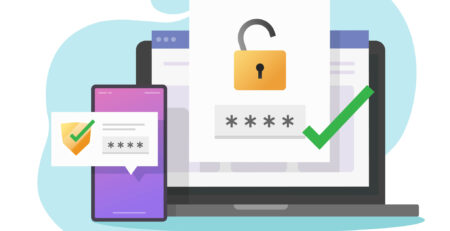Effective Strategies for Protecting Against DDoS Attacks
In today’s digital age, small businesses are increasingly reliant on their online presence to drive growth and maintain operations. However, this dependence also makes them vulnerable to cyber threats, particularly Distributed Denial of Service (DDoS) attacks. These attacks can cripple your business by overwhelming your network with traffic, rendering your services unavailable. As an IT-managed service provider in Southern California, it’s crucial to educate your clients on effective strategies to protect against DDoS attacks. Here are some key measures to consider:
1. Understanding DDoS Attack Types
The first step in protecting against DDoS attacks is understanding the threat landscape. DDoS attacks come in various forms, including volumetric attacks, protocol attacks, and application layer attacks. Each type targets different aspects of your network infrastructure. By understanding these threats, you can better prepare and implement appropriate defenses.
2. Implementing Robust Network Security Measures
Investing in robust network security measures is essential. This includes firewalls, intrusion detection systems (IDS), and intrusion prevention systems (IPS). These tools can help detect and mitigate suspicious traffic before it overwhelms your network. Additionally, consider using a web application firewall (WAF) to protect your web applications from targeted attacks.
3. Leveraging DDoS Protection Services
Many service providers offer specialized DDoS protection services. These services can absorb and mitigate large-scale attacks, ensuring your network remains operational. Look for providers that offer scalable solutions, as the size and complexity of DDoS attacks can vary significantly.
4. Deploying Rate Limiting and Traffic Filtering
Rate limiting and traffic filtering are effective strategies to manage incoming traffic. Rate limiting controls the number of requests a server will accept over a specific period, preventing overload. Traffic filtering, on the other hand, involves blocking traffic from suspicious IP addresses or regions known for malicious activity.
5. Using Content Delivery Networks (CDNs)
Content Delivery Networks (CDNs) can help distribute traffic across multiple servers, reducing the impact of a DDoS attack. CDNs cache your content in various locations worldwide, ensuring that even if one server is targeted, others can continue to serve your content. This not only improves website performance but also enhances security.
6. Implementing Redundancy and Failover Solutions
Redundancy and failover solutions are critical for maintaining service availability during an attack. By distributing your resources across multiple data centers or cloud providers, you can ensure that if one location is compromised, others can take over. This approach minimizes downtime and maintains business continuity.
7. Regularly Updating and Patching Systems
Keeping your systems and software up to date is a fundamental security practice. Regular updates and patches address vulnerabilities that attackers could exploit. Ensure that all network devices, servers, and applications are regularly updated to protect against known threats.
8. Developing an Incident Response Plan
Having a well-defined incident response plan is crucial for minimizing the impact of a DDoS attack. This plan should outline the steps to take in the event of an attack, including communication protocols, roles and responsibilities, and recovery procedures. Regularly test and update your plan to ensure its effectiveness.
9. Educating Employees and Clients
Human error is often a significant factor in successful cyberattacks. Educate your employees and clients about the risks of DDoS attacks and the importance of following security best practices. Regular training sessions can help raise awareness and reduce the likelihood of an attack succeeding.
10. Monitoring Network Traffic Continuously
Continuous monitoring of network traffic is essential for early detection of potential DDoS attacks. Use advanced analytics and monitoring tools to identify unusual traffic patterns and respond quickly to mitigate the threat. Real-time monitoring allows you to take proactive measures before an attack can cause significant damage.
Conclusion
Protecting against DDoS attacks requires a multi-faceted approach that combines technology, processes, and education. By implementing these effective strategies, small businesses can significantly reduce their risk and ensure their online presence remains secure and available. As an IT-managed service provider, your role in guiding and supporting your clients through these measures is invaluable. Stay vigilant, stay informed, and help your clients build a robust defense against DDoS attacks.











Leave a Reply